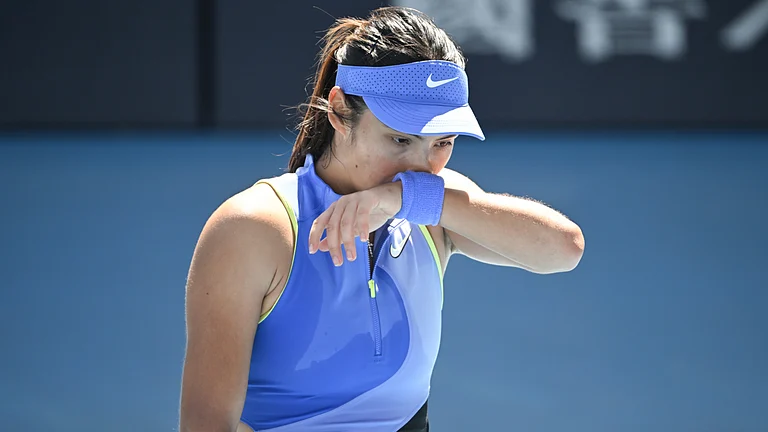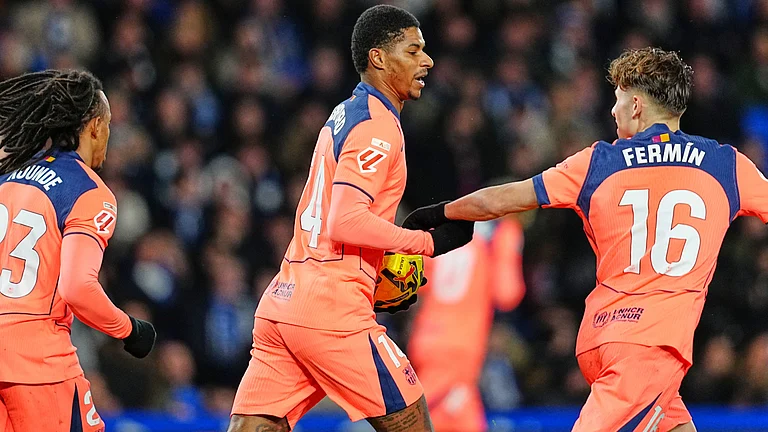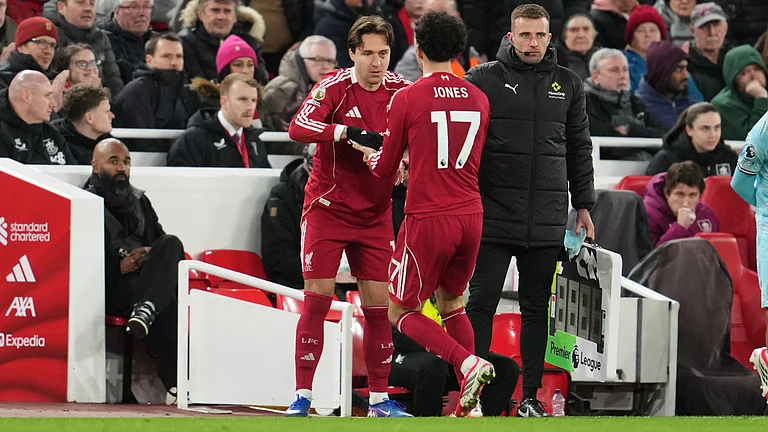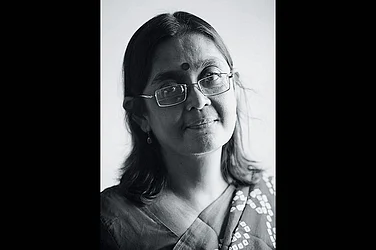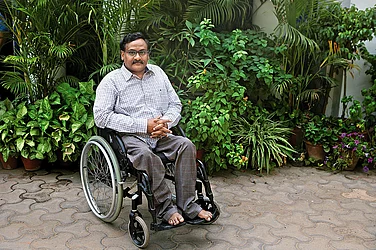Dalit politics in Kerala didn’t arise during colonial modernity, rather it has been around for centuries. Since the medieval period, it has encountered and resisted Brahmanism. Dalit politics waged a war against Brahmanism and white colonialism in the last century and continues to do so. Though there aren’t enough records about other Dalit movements before the nineteenth century, there are several literary works, including Pachalloor Pathikam and Chenganooraathi Paattu, which give us an explicit idea about cultural resistance against the Brahmanical societal system. However, in the long history of Dalit resistance and politics, it was the movements started during the last decades of the nineteenth century led by Mahatma Ayyankali and Poykayil Appachan that wreaked the most havoc on the Hindu system of social inequality. Unlike other contemporary social movements, these were fundamentally systematic, strong and concerted.
Dalit visionaries pioneered Kerala society’s cultural and social reproduction. It was their uprisings that fought for the freedom to wear clothes, eradicate untouchability, and for a democratic society with equal opportunities and justice. Mahatma Ayyankali led his famous Villu Vandi Yathra (bullock cart ride) across Travancore roads in 1893 for the right to travel on public roads. Dalits and people belonging to the lower castes were not even allowed to walk on the roads or own bullock carts at the time. The reformist leader’s protest journey made the roads accessible for not only Dalits but for all castes, which placed everyone on an equal footing. This why Mahatma Ayyankali’s journey on the villu vandi is hailed as the transition point of Malayalees from mere subjects to citizens. However, the emergence of Britain as a colonial power also must be acknowledged since it played a role in the formation of a space that served as a catalyst for the sudden upsurge in Dalit interventions that occurred during the aforementioned Renaissance. Dalits used this opportunity to assert their justice politics and engaged in socio-cultural and spiritual debates which led to the formation of Kerala’s modern cultural value system.
The cognitive Dalit discourses along with the tug-of-war between Hindu monarchs and the British, which caused social and economical changes not only gave a boost to the Renaissance movements but also created a sphere of modernisation. Even though this modernisation overlapped with some traits of Renaissance politics, it had a completely different approach to social transformation. When the Renaissance movements focused on the annihilation of caste, modernisation offered spaces for modifying caste through a process, which later became known as Sanskritisation. It led to the formation of communities seeking to culturalise caste. This newly created socio-cultural situation and the shift in the political scenario adversely affected Dalit politics.
Through the presidential order of 1950, Dalits, who weren’t Hindus before, were forced to identify themselves as Hindus. Even though many scholars and writers interpreted this as a move aimed for attaining reservation, when we evaluate the social conditions of the depressed castes in Travancore at that time, it was protection by the State that was a more crucial need. The most important thing for the Dalits was to be included in the ‘Atrocities Act’ since they were attacked regularly by the Savarnas. However, this forceful identity shift of the Dalits along with the effects of Sanskritisation eventually expunged the Renaissance Dalit movements.
Era of an ideological conflict
With the emergence of the post-independence era of parliamentary politics, Kerala became fertile ground for Left parties. This was primarily due to the perception that the Left was inherently subaltern from a cultural and political standpoint. This thought was backed up by the Communists’ cultural interventions at that time. Their idea of the subaltern, however, differed from the reality on the ground. They failed to understand the workings of caste and the political necessity to represent the downtrodden in leadership. This led to ideological conflicts between them and the Dalits inside their fold. Many Dalit leaders walked out of Leftist parties and exposed the hypocrisy of these parties.
One such leader was Sabharaj Thirumeni (Appachi), the Revolutionary Socialist Party (RSP) leader who founded the Dravida Class United Front (DCUF) in opposition to anti-Dalit practices within the Left movement. Thirumeni, an erstwhile Prathyaksha Raksha Daiva Sabha (PRDS) follower, established the DCUF with a vision of a Dravidian political revolution. He did this by incorporating Poykayil Appachan’s historical and theological interpretations into his own methodologies. DCUF’s primary objective was to combat caste oppression and overcome caste differences. The organisation had a very strong militant character and this actually gave a great sense of security to the scheduled communities. Another leader was V.D. John, an ex-Communist who participated in the famous Punnapra-Vayalar struggle. He started the Backward Class Christian Federation (BCCF), recognising the need to uplift Dalit Christians as they were marginalised by both social and political systems. Another prominent leader of post-independence Dalit politics was Kallara Sukumaran who influenced many later socio-cultural movements and leaders. He formed the Peeramedu Taluk Harijan Federation in 1957 to address socio-political issues faced by the Dalits, and later renamed it the High Range Harijan Federation (HRHF) in 1962, extending its activities to the entire district of Idukki.
After the liberation struggle, caste itself evolved. Even among the reformed communities (castes were joined to form communities; for instance, the Ezhava community was formed by joining Ezhava, Billava and Thiyya) in the Renaissance, social conflict arose during the 1960s. The caste structure was reorganised to form an expanded middle class which includes a section of Ezhavas, the Nairs and Syrian Christians. Thus, friction points were created inside the existing political structure making it Dalits vs non-Dalits to some extent. It was this realisation and sense of entitlement that forced the Dalit people and youth of Kerala to desire a revolution to some extent. As a result, most of them joined Left radical movements in Kerala, which gained strength in the 1970s.
Kerala’s seventies were significantly affected by the Naxal movement sweeping across India at the time. Due to the regional nature of the Dalit political parties that had emerged in Kerala up to that point, and the cultural and social hegemony acquired by the Left parties by deconstructing history and remaking it to their advantage, the new Dalit generation was driven closer to the Left extremist movements. It is also worth mentioning that movements like Prathyaksha Raksha Daiva Sabha (PRDS) and Sadhu Jana Paripalana Sangam (SJPS) could not create a unified political situation for their followers after State formation. They had to operate in the background only since both faced social and organisational problems. However, the High Range Harijan Federation (HRHF) intervened in issues statewide shedding their local nature and also fought for unity among Dalits. During this transition, they changed their name to the Kerala Harijan Federation (KHF).
Their intervention in caste issues during this period increased their followers among the depressed castes since the Left parties stood with the dominant sections. The KHF played a crucial role in making socio-political conditions democratic in the 1970s. They challenged government policies which backstabbed the depressed castes and questioned the land reforms which denied justice for Dalits. The hypocritical socio-political situation which denied caste existence placed many young, educated Dalits who were Left-leaning in an ideological dilemma. This small percentage of Dalit youth thus tried to organise movements as soon as they realised they were in communal trouble, which led to the formation of Socially, Educationally and Economically Depressed Indian Ancient Natives (SEEDIAN). SEEDIAN approached the Dalit issue within the Marx-Lenin-Mao-Ambedkar methodology. Thus, a philosophically piqued period arose in the history of post-independence Dalit politics which marked the start of the 1980s.
The rise of Ambedkarite politics
The 1980s were a significant decade in Kerala’s Dalit political history. It was during this period that Babasaheb Ambedkar’s philosophies and ideologies were effectively and widely recognised as a potential political and cultural tool. This awakened the newly formed Dalit middle classes to organise and problematise the atrocities against Dalits as well as the legal and political negligence they faced. This led to the birth of organisations such as the Dalit Liberation Front (DLF). The DLF was formed after the death of a Dalit sub-inspector named Soman in 1981. Foul play was suspected in his death and this incident made clear the impunity with which the upper castes could suppress the Dalits. There was a dire need for an organised effort to stop such injustices. The DLF, the Dalit Seva Samiti (DSS)—a militant group formed to counter attacks on Dalits from oppressor castes and their organisations—were some of the groups formed at that time to address this issue and be a platform for Dalit voices. The rise of the RSS and its influence in Kerala was also another reason for the formation of organisations like the DSS.
In 1980s, many books and magazines about Babasaheb Ambedkar, Ambedkarite politics and Dalit politics were widely circulated among educated Dalits. Magazines such as Dalit Voice and Final Call strongly influenced the Dalit youth during this period. Also, the introduction of subaltern studies into academia affected Keralites’ politics and perspectives. The name change of KHF to IDF (Indian Dalit Federation) in the mid-80s and the formation of the Indian Labour Party (ILP) by Kallara Sukumaran were the result of this new rise. Even though ILP contested in the elections, it was unable to create any major impact in the political arena, which resulted in its merger with the BSP during the late 1980s. The spread of Ambedkarite ideologies and literary works during this decade, however, led to the enlightenment of young people and students. Consequently, they became acutely aware of the political and ideological need for a movement that could withstand atrocities against Dalits and Bahujans. This led to the formation of the Kerala Dalit Panthers (KDP). Unlike other former and contemporary movements, KDP was primarily based on Ambedkarite ideas. It was formed in 1988 by merging Dalit Cultural Front (DCF) Pandalam and Ambedkarite Students Movement of India (ASMI) in the presence of Arun Kamble, the then All India President of Dalit Panthers of India. KDP organised study classes and socio-cultural discussions across Kerala. It was an important link to out-of-State Dalit movements and played a crucial role in shaping the ensuing Dalit politics of Kerala in the 1990s, which was Ambedkar-centered.
During the 1990s, a profound transformation occurred in the Dalit political spaces. The influence of the Panthers and the strong impact of Ambedkarite ideas literally changed the Dalit community and Kerala politics too. The newly educated Dalits and the Dalit middle class started to engage in politics by analysing post-independence lived experiences. An intellectual class of Dalits arose during this period. Their political and ideological interventions created a new civic sense for the whole society. As a result, feminist politics, environmental politics, human rights and queer politics became more intersectional, even though they had been active since the 1970s. The 1990s also witnessed an exciting rise in Dalit student activism in which they engaged in campus politics and student justice movements. Political parties like the Bahujan Samaj Party (BSP) and the Republican Party of India (RPI) entered the political arena during this time, even though the BSP was officially launched in 1989. Dalit-Bahujan politics stirred the conventional political minds of the State and challenged RSS fundamentalistic politics which were on the rise during the post-Mandal period. Many anti-Brahminical organisations such as Dalit Aikya Samithi (DAS), a group formed for opposing casteism and uniting various Dalit castes politically, also came into being during this decade.
The cognitive and intellectual interventions of Dalit intellectuals have given fresh vigour to Dalit communities and civil societies. As a result, there were many significant struggles and interventions throughout the 1990s. Among them are the Kurichy 11-KV Line struggle and interventions in the land rights movement. During the 1990s, the need for land was emphasised and the validity of land reforms was questioned more comprehensively. Dalit politics also started visibly engaging with mainstream political parties questioning their patronage over the Dalit communities. Thus, mainstream political parties were forced to have political and epistemological dialogues with Dalit society. This resulted in caste being accepted as a social phenomenon rather than an illusion by these parties. This period also recognised the importance of cultural interventions in combating systemic discrimination. A philosophical and historical approach was developed to counter the dominant cultural hegemony by rereading mainstream history and culture. Slave narratives and the question of human dignity became central points in rereading history during this period. As a result of these advancements, Kerala society developed into a knowledge society, which had a profound impact on the politics of the 2000s. Subsequently, the effects of the aforementioned enlightenment of the 1990s prompted Dalit politics to assert its needs in a more effective way. This resulted in land struggles such as the Chengara struggle, Muthanga struggle and Arippa struggle, which challenged the government’s apathy and inhumane treatment of landless Dalits and Adivasis. Organisations like Dalit Human Rights Movement (DHRM) aiming to overcome Sanskritisation among Dalits by intervening culturally and historically during the 2000s were also the result of the 1990s enlightenment.
This epistemological contribution of the Dalit politics of the 1990s remains the base even in the post-Covid period. Even though the lack of movements since the second decade of the twenty-first century affected the further progress of the community, it still managed to raise intellectuals from the community. And these individuals, using social media influence in the post-Covid era, have been successful in creating a caste-aware public consciousness. Nevertheless, we cannot say that these developments in Dalit politics have effectively changed the course of mainstream politics in Kerala considering the Communist government of Kerala was the first to introduce EWS reservation (the Cabinet decision on the quota for EWS was taken in November 2017 even though it was implemented in January 2020). However, on a more ideological level, these changes in the Dalit sphere have established the issues of caste and gender as significant political ones and it is through these Dalit interventions that society recognised the shift from the ritual purity concept of caste to caste patriotism. Hence, unlike in the past, a large number of Keralites are aware of the need for Ambedkarism. Consequently, Ambedkarism and Dalit politics are certain to cultivate the minds of generations in the years to come.
(This piece appeared in print titled ‘The Memorable Malabar Rising’)
Anandu Raj is a writer and social thinker from Kottayam, Kerala








